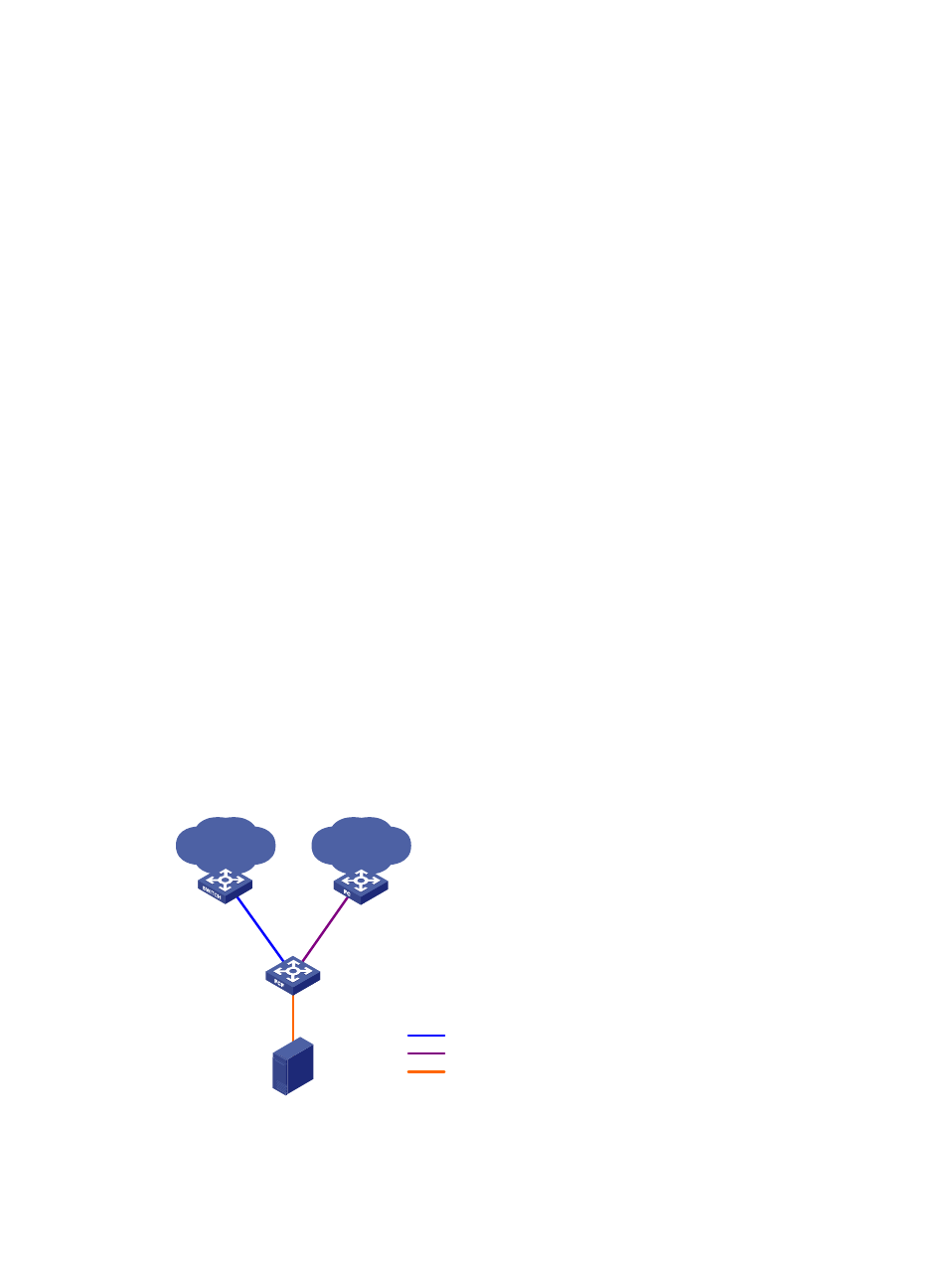Fcoe modes, Fcf mode – H3C Technologies H3C S5830V2 Series Switches User Manual
Page 21

10
a period 2.5 times the interval specified by the fcoe fka-adv-period command, it deletes the virtual
link.
FCoE modes
The switch supports the following FCoE modes:
•
FCF mode—A switch operating in this mode is called an FCF switch. Its VFC interfaces support E
mode (E_Port) and F mode (F_Port).
•
NPV mode—A switch operating in this mode is called an N_Port Virtualization (NPV) switch. Its
VFC interfaces support F mode (F_Port) and NP mode (NP_Port).
•
Transit mode—A switch operating in this mode is called a Transit switch. Its Ethernet interfaces can
operate in ENode mode or FCF mode.
An FC or FCoE-capable switch can operate in the following modes:
•
FCF mode—When the switch operates in this mode, it can connect to the E_Port on another FCF
switch through its E_Port, or connect to the N_Port on a node or the NP_Port on an NPV switch
through its F_Port.
•
NPV mode—When the switch operates in this mode, it can connect to the N_Port on a node
through its F_Port or to the F_Port on an FCF switch through its NP_Port.
•
Transit mode—When the switch operates in this mode, it can restrict its Ethernet interface to
receiving traffic only from an ENode or FCF switch by configuring the interface to operate in ENode
mode or FCF mode.
•
Non-FCoE mode—When the switch operates in this mode, it is a standard switch and does not
provide any FC or FCoE capabilities.
FCF mode
An FCF switch encapsulates FC frames in Ethernet frames and uses FCoE virtual links to simulate physical
FC links. An FCF switch provides the FC switch features on a lossless Ethernet network.
Figure 10 FCF network diagram
In an FCoE environment as shown in
, an FCF switch can perform the following operations:
•
Connect to an Ethernet switch through an Ethernet interface.
VFC interface
LAN
SAN
Ethernet
switch
FCF switch
FC switch
ENode
Ethernet
FC
FCoE
FC interface
VN interface
Ethernet
interface
